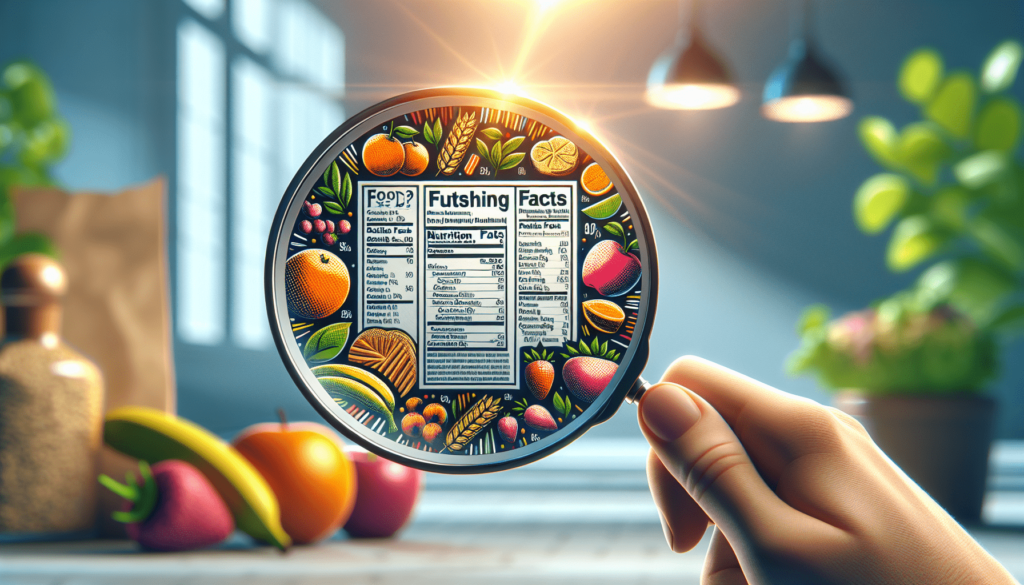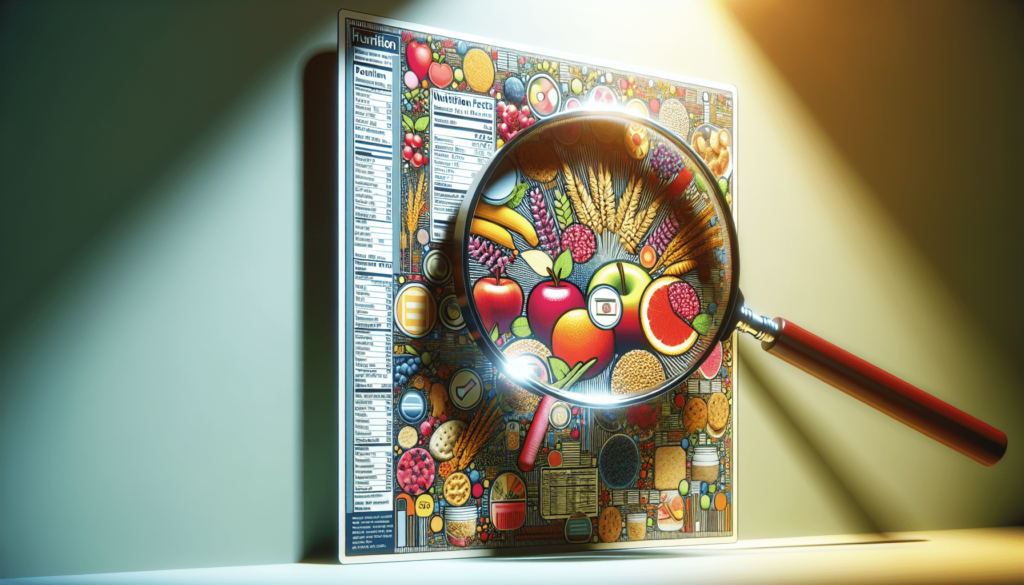Have you ever stood in a grocery store aisle, squinting at a food package, trying to decode what in the world those teeny-tiny letters are trying to tell you? It’s like they’re mocking you, standing there in the cereal aisle clutching a box of granola while a friendly octogenarian zips past with a cart full of kale and confidence. Fear not, dear consumer, because today, you’re about to embark on a journey to mastering the art of reading food labels like a savvy detective of the culinary world.

The Da Vinci Code of the Supermarket: Decoding Food Labels
Nutrition Facts Panel: Not Just for Nutrition Nerds
At first glance, the nutrition facts panel might look like a series of numbers that could double as a phone book for a small, secluded town. But there’s method to this numerical madness. The panel holds the secrets to understanding what’s really going into that attractive package – and possibly into your mouth, if you decide to adopt it and take it home with you.
The nutrition facts panel includes several key pieces of information:
- Serving Size: All the data on the label is based on this amount, not on the wishful serving size in your imagination.
- Calories: Because, let’s face it, those delicious cookies wouldn’t be the same without a little caloric concern.
- Nutrient Listing: Here, you’ll find the good, the bad, and the ugly — from fats and cholesterol to vitamins and fiber.
Serving Size: A Misleading Friend
Let’s start with the most crucial yet often misleading item on a food label — the serving size. It’s one thing to feel heroic about eating one serving of ice cream until you realize that one serving is officially approved as half a cup. Who eats half a cup of ice cream? Elves?
And don’t even get me started on cereal serving sizes. When’s the last time you poured out three-quarters of a cup and didn’t add another three or four for good measure? Exactly. Mind those servings, and all the rest of the information might just make sense. Or at least be less deceptive.
Calories: The Bitter Truth
Ah, calories. Those mischievous little units of energy that aren’t directly observable but somehow find their way to your waistline at alarming rates. Beneath the serving size, you’ll find the calories per serving number, which acts like a fitness instructor, gently whispering, “Are you sure about that second portion?”
Nutrient Listing: The Usual Suspects
Within the nutrient listing, the plot thickens with a mix of fats, cholesterols, and fibers galore. It’s a classic tale of good vs. evil with a nutritional twist. Here’s what to look out for:
- Total Fat, Saturated Fat, and Trans Fat: Fat is essential but needs moderation. With friends like these, moderation is key to preventing your arteries from getting the wrong idea.
- Cholesterol: Keeping an eye on these levels helps your heart stay cheerful and energetic.
- Sodium: Great in small doses, a risk when consumed like water.
- Carbohydrates: It’s not quite the enemy, but it’s all about balance. Beware of sugars, like finding a marshmallow in your quinoa.
- Proteins: The VIP member of your nutrition label, celebrated on every health blog ever.
- Vitamins and Minerals: The eternal good guys, often shy and obscured beneath the bad guys on the label, but powerful allies nonetheless.
Ingredients: The Roll Call of Edible Cast Members
First Things First: The Order Matters
In the land of ingredients, the pecking order is critical. Ingredients are listed in descending order of weight, so the first few items are winning the popularity contest. If sugar is number one, it’s like discovering that the class valedictorian harbors a secret fondness for binge-watching reality TV – unexpected and slightly concerning.
The Multisyllabic Monsters: What Are They?
Those long, complex, chemistry-class-flashback-inducing names scattered throughout the label are called food additives. Yet they sound like agencies from a spy movie. Monosodium glutamate, anyone? When these pop up, Google is your friend. Unless you’re one of the superhumans who can pronounce “artificial” better than I can articulate “get out.”
Natural vs. Artificial Flavors: Oh, The Irony
Natural flavors sound like harmonious choirs singing in fields of sunshine, but what do they really mean? Not much, actually. Interestingly, the naturalness of these flavors can sometimes be as genuine as an avocado-flavored soft drink. Artificial, meanwhile, is the label’s way of saying, “Why lie? Science did this.”
Claims on Labels: Beautiful, Deceptive Promises
Light, Low, and Free: Hopes and Dreams
A label may boast about being light, low-fat, or free of something. To this, you might react like you’ve struck gold, turning that beloved box of cookies into guilt-free indulgence. However, these terms have specific meanings:
- “Light”: At least a third fewer calories. A bit like finding out your favorite band is releasing an album with fewer breakup songs – a win-win.
- “Low-calorie”: Fewer than 40 calories per serving.
- “Free”: The product pays off its calorie or sugar-debt with interest.
The Organic Unicorn: The Magic Label
“Organic” is the holy grail for health-conscious individuals and basically means that no synthetic fertilizers or pesticides were used… and you pay a premium for that peace of mind. It doesn’t mean the product consumed no electricity from renewable resources while listening to whale songs, so temper those expectations.
Non-GMO: The Ethics of Edibles
Non-GMO labels assure you that genetically modified organisms weren’t harmed in the making of said food product. It’s the Sherlock Holmes to your Watson, guiding you down a path of ethical consumption. Whether or not you care is up to you, Watson.
Sugar By Any Other Name: Is Just As Sweet
Decode the Sugar Factory
Sugar. It’s a sweet siren call hard to resist, with more aliases than a double agent in a Bond movie: sucrose, high fructose corn syrup, dextrose, maltose, and the ever-mysterious “evaporated cane juice.” Though not all sugars are created equal, most lead to the same plot line: increased calories without the fanfare of actual nutrients.
The World of Added Sugars
Added sugars – also known as the condiment that secretly sneaks into your savory dishes, acting like it owns the place. Think of it as the “specific mode of transportation” no one asked for in your ride-share app. The aim is to limit these because they are essentially empty calories primed as hitchhikers on your well-crafted diet plan.

Conclusion: Journey On, Food Label Disciple
Congratulations! You’ve completed the highly accessible crash course on reading food labels like a savvy (and hilarious) nutrition tale-weaver. By understanding what the labels want, you can make informed decisions,, sidestepping the tired pitch for sugar-coated cardboard squares disguised as breakfast cereal or barely recognizable cuisine.
This knowledge arms you with the ability to carry on through aisles with conviction, graciously nodding at the octogenarian zipping past with kale; you’ve got this. So go forth, pick up that box of granola confidently, kindly reject the deceptively healthy yogurt, and remember: Not every ingredient needs pronunciation practice. Your grocery shopping experience is now on a whole other competent and amusing level!
